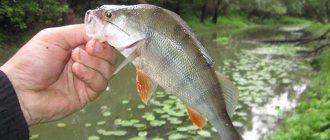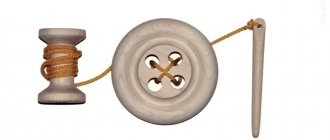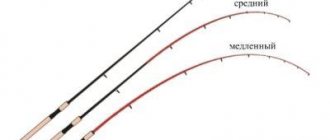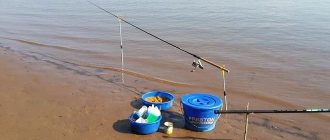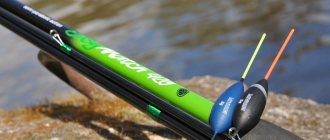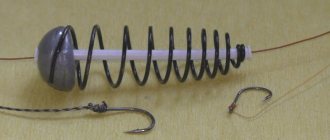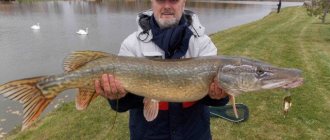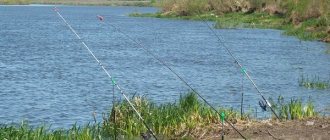Every avid fisherman must have a telescopic fishing rod in his arsenal, and more than one. It appeared in the 70s of the last century and quickly began to displace traditional bamboo fishing rods. As is known, they were a thin stick about two meters in length with fishing tackle attached to it. Such devices were very inconvenient to transport, and it was impossible to make long casts with their help.
To solve this problem, a telescopic fishing rod was created.
Criteria and rules for choosing a fishing rod
Before choosing a float rod or a form for other types of fishing, you need to know all the necessary criteria under which fishing will be enjoyable.
So, choosing a fishing rod for summer fishing, how to make the right choice? There are not many secrets when choosing.
Rod weight
The weight of the blank will help you choose a fly rod for summer fishing, like other types of rods. The smaller it is, the longer the angler can hold it in his hands. This is especially true when choosing either a Bolognese fishing rod or a spinning rod.
Rod length
Before choosing a float rod for summer fishing, pay attention to the length. This indicator depends on the reservoir and where the trophies will be caught. The length of the blank is also important for spinning rods; here the choice is made based on whether you plan to fish from the shore or from a boat.
Material of manufacture
The best material for different types of fishing rods is considered to be carbon or carbon fiber; it is light, durable, but resistant to impacts. Such material cannot be cheap; for those who are looking for cheaper options, fiberglass is offered. It is heavier, and in other respects it will be slightly inferior to carbon, but it is not afraid of impacts.
Rigidity
Rod forms are different:
- soft;
- medium hardness;
- hard.
The choice is made depending on personal preferences and the required structure for the type of fishing. Determining the rigidity is not difficult; the tip of the selected rod rests on the ceiling. If only the tip bends, then the rod is hard, the deflection occurs in the upper half, the form is classified as medium hard. If the stick bends all the way to the butt, you have a soft look.
Additionally, they check by shaking the rod; it should bend evenly up, down, right and left.
Rod quality
Quality indicators depend on many factors that should not be neglected:
- choose products from well-known brands that value their reputation;
- carefully inspect the fittings, they must be of high quality.
Ease of use
This indicator is purely individual, you need to lay out and hold the product in your hand, it is possible to simulate an easy cast. If the rod can “fit” in your hand, then it will be convenient to use.
Price
Everyone will choose a fishing rod for float tackle or another according to their own wallet, but you should not skimp on the form. It is worth understanding that a good fishing rod cannot be cheap. Therefore, first calculate how much money you can realistically allocate for the purchase.
A universal fishing rod for beginner fishermen: How to choose fishing gear
Let’s be honest, today the prices for gear and equipment are stinging, and they bite painfully.
It’s good for someone who clearly understands what he needs, goes shopping, compares and in the end finds something better and cheaper.
Let's try to figure out how to get universal tackle at minimal cost - a simple fishing rod suitable for fishing in different conditions and for different fish.
A rod for all occasions - the most versatile of inexpensive rods can be considered fiberglass or composite, telescopic, with rings and a reel seat, 3-3.6 meters long, designed for casting loads from 20 to 40 g (these numbers should be indicated on the butt knee) .
The brand does not matter, because almost all such products are produced today in Korea, China or Southeast Asia. You also don’t have to pay much attention to the material of the handle, although the nicest thing, of course, is cork. It is better, if you have a choice, to take the rod in your hands, spread it out and shake it: it should not be too liquid; tap at the joints; creak or crackle.
Guides with ceramic inserts are standard equipment on such rods today, but they should not be too narrow.
Reel - The reel should be spin-free, have a rotating line take-up roller and hold about 150 meters of 0.30mm line. In addition, it requires a spare spool. Wind 100 meters of 0.20 mm line on one spool, and 100 meters of 0.30 mm on the other.
To ensure that the fishing line reaches the edges of the spools, use cheap domestic fishing line or any old fishing line that has become unusable as a winding line. Now let’s look at how to complete the set for catching various fish.
Roach and crucian carp stand together here, as they are famous for their careful bites, and they often have to be caught not from the bottom, but above it or in the middle layers of the water. Up to a depth of two meters you can use a fixed float, deeper - a sliding one.
Don't be tempted to buy miniature models; with 0.20 line, the float should be sufficiently lifting so that you can cast easily and far. Let's say, a five-gram rolling and a three-gram fixed. But they need to be immersed so that the very tip of the antenna protrudes from the water.
For still water, peacock feather floats with a balsa body at the bottom (waggler) are best; for currents, oblong balsa floats with a thickening at the top are best. On the main line there are 1-2 pellets and a small olive, on the leash there is a small pellet.
For leashes, buy twenty-five meters of fishing line 0.15 and 0.12 mm; 0.12, for small hooks when fishing with bloodworms, it is better not to tie directly to 0.20, but use 0.15 as an adapter. Several bags of hooks from #12 to #18 complete this piece of equipment.
Bream and tench - these are mainly caught from the bottom, both with a float (bream) and without. The same spool with 0.20 line remains on the reel, only for tench it is better not to use a leash, especially in the grass, and choose a larger hook (No. 6-12). Bream in clean areas can also be caught with a 15 cm leader (hooks No. 8-14).
Large white crucian carp, perch, ide, and chub require approximately the same gear. In taiga rivers, grayling is added here. To fish without a float, you must, of course, have several sliding sinkers and swivels.
With some caution, it is quite possible to catch pike (and pike perch) with live bait using a universal fishing rod. Here, of course, the fishing line used is 0.30 mm; a cork float and a medium olive are put on it, a carabiner is tied to the end, and a metal leash with a tee is fastened to the carabiner. Larger live baits need to be cast smoothly so as not to break the rod tip.
The same spool with 0.30 line can remain on the reel when fishing for carp. Carp can be caught with a bream float, without a float, with a bottom sliding sinker, or from the surface on a floating crust, with a transparent float ball. The hooks used here are single, strong (forged), No. 2-8.
Of course, our rod is only suitable for spinning with reservations, but it can be used for fishing with small and medium oscillating and rotating spoons, as well as twisters. It may seem a little long, but when fishing from the shore, the extra length makes a big difference.
Thus, with one single fishing rod you can be more or less prepared for almost any situation encountered in our ordinary freshwater bodies. If you foresee problems with transportation when traveling on vacation, business trips, resorts, etc., pay attention to portable telescopic fishing rods that, when folded, fit into any suitcase.
This can be hidden even from the watchful eye of your wife, when she doesn’t want to hear about any fishing...
N. Brevko
Previously on the topic of Fishing:
Source: https://www.nExplorer.ru/news__13213.htm
Best fishing rod for a beginner
A novice fisherman who is just beginning to learn all the intricacies of catching aquatic inhabitants should try his hand at simple gear. The best option would be a fly rod, but you need to assemble the tackle yourself. An important point will be how to choose a float for your fishing rod.
You can also try your hand at spinning fishing, but it is important to know how to choose a spinning reel for such purposes.
It is better to leave feeder fishing and fly fishing for later; these types of fishing will require a wider range of knowledge.
Choosing a fishing method
Spinning fishing
This type of fishing is very exciting and gives a good catch.
The main thing is to learn how to properly control the spinning rod. It will take quite a lot of time to improve your skills. You may spend one fishing season learning the techniques and tactics of working with a spinning rod, but all your efforts will return a hundredfold. And catching, for example, pike perch with silicone baits will no longer seem like a fairy tale. First of all, pay attention to the casting force (use 1/3 of your heroic power) and its range (vary the force and angle of the cast). There are a lot of exercises that will help you develop these skills and enjoy the results. Explore our section on spinning.
Float fishing with a fly rod
Why do many fishing enthusiasts choose a fly rod?
The answer is simple - this tackle is universal and suitable for almost any fishing conditions. There are no unnecessary parts that could cause inconvenience to the fisherman. The equipment and structure of the fly rod are very simple. The casting technique is simple and does not require the participation of a reel; there is no reel in this fishing rod at all.
A number of advantages of a fly rod:
- reasonable price;
- simplicity of the device, understandable even for beginners;
- simplicity of fishing technique;
- high probability of catch in any body of water, both white fish and predators can bite;
Thanks to these characteristics, this fishing rod has won many fans among fishing enthusiasts.
Feeder fishing
This fishing method can scare off novice anglers due to some nuances.
Let's figure out what it is. Feeder fishing is a modern version of bottom tackle. The main difference between the feeder and the prototype is the presence of a rod with a sensitive tip, which is designed to signal the beginning of a bite. The tackle is also equipped with a feeder, which attracts fish to the baited hook. You can cast this feeder up to 100-120 meters from the shore thanks to the powerful feeder rods and reels.
And this is a great way to catch shy deep fish. The advantage of feeder fishing is that the angler can sit in a convenient place and enjoy nature and relaxation. This happens thanks to the feeder - you don’t need to move around the reservoir in search of fish, you just have to remember to regularly send food to the fishing spot. Once you understand the intricacies of bait and the types of rods, feeder fishing will become a dynamic and unexpected outdoor sport for you.
How to choose the right spinning reel grinder - criteria for assessing the most important components of a reel for spinning, feeder and float fishing.
We looked at how to choose telescopic spinning rods in this article.
We choose the right fishing line once and for all for each fishing method.
Equipment elements
For fishing, one rod blank is not enough; in addition to it, you need to select other elements of no less quality.
Reels
Choosing a spinning reel for float tackle is simple; the main indicators are:
- The size of the spool, the reel for a Bolognese fishing rod can have a size of 1000, this will be quite enough. A feeder fishing rod will require larger sizes, starting from 3000.
- The number of bearings directly affects the service life; the more, the better.
- The weight should be minimal so as not to weigh down the form.
Everyone has their own preferences regarding companies; you can ask a consultant for advice.
Rings
When choosing a fishing rod with rings, you should pay special attention to them. They should be located on two legs, while the distance to the form should be reduced closer to the whip.
Victoria Leshchenko
I've been working hard in the fishing tackle department for the past six years. I can help you assemble almost any gear.
Ask a Question
The quality of the inserts in the rings is important; it is better to choose titanium ones, but ceramics are also considered an excellent option.
When checking the rod when purchasing, go through each ring with your fingertips. This will help identify the presence of burrs and cracks, which will then damage the fishing line or cord.
Hooks
This consumable is selected depending on what bait will be used and what specimens live in the selected body of water. Float tackle and feeder will require numbers 5-9 according to the domestic classification, other types will require an individual approach.
fishing line
How to choose fishing line for a float rod? The criteria here are different, in most cases they use thin, light tackle, but the size of the inhabitants must be taken into account:
- for fishing with a float, 0.18-0.22 mm of fishing line is sufficient;
- spinning will require, depending on the test and the bait used, 0.2-0.3 thickness;
- the feeder needs stronger tackle, this includes 0.25-0.4 mm fishing line.
- Fly fishing is chosen depending on the bait used.
The important point will be the manufacturer; you should not be fooled by a low price.
Floats
How to choose a float for a fishing rod? Not much advice here:
- float tackle for a flywheel or lapdog is made delicate, so you need to choose a small float weight;
- match equipment requires heavier floats.
For spinning, such an element is not needed, but fly fishing and feeder use special products of this type.

Sinkers
They are selected strictly according to the weight of the floats; equipping the bottom tackle will require heavy weight sinkers so that the tackle does not get carried away by the current.
"Telescope" with rings
A telescopic fishing rod with rings is also called Bolognese, since its place of origin is the Italian province of Bologna.

To expand the tubes, it has special rings attached to the ends of each of them. They also serve to hold the fishing line. The length of the fishing line can be changed using a reel. Moving apart, the tubes are well fixed, allowing the fisherman to choose the desired length of the fishing rod. As a rule, it has as many knees as the number of meters it extends.
When folded, its length is no more than 1.2 m, which refers to a classic long-built fishing rod. A telescopic fishing rod with rings of this type is very convenient to use. It is lightweight, making it comfortable to hold while fishing.
As for short-fold fishing rods (when folded, their length is 0.6-0.7 m), their advantage lies only in this small size, compact for transportation. Otherwise, they are very inconvenient, especially for beginners, since their weight and rod thickness are approximately 1.5 times greater than that of a classic fishing rod.
How to choose fishing rod equipment
It is necessary to select equipment for a fishing rod individually and depending on what form was purchased:
- Spinning is characterized by an excellent reel, strong fishing line or cord, high-quality leashes and lures of appropriate weight.
- The feeder blank has a powerful reel that can hold a large trophy when hooking.
- Fly fishing is easy.
- A float with rings can have an inertial coil; everyone has their own preferences.
- The fly rod is equipped only with a fishing line, which is attached to the whip.
Now we know how to choose a reel for a fishing rod and the blank itself. Use the tips and recommendations and your gear will always be of excellent quality.
You can ask your question to our author:
Types of telescopic fishing rods
The rod has many modifications:
1. Bologna rod: equipped with guides and a reel. With its help, they make long casts and catch fish far from the shore. With this tackle you can fish at the bottom and throw the tackle over an obstacle. 2. Fly rod: a popular tackle for fishing in the coastal zone. It catches small and medium fish, comes in different lengths and is easy to use. 3. Feeder tackle: for catching fish from the bottom. Sometimes telescopic models made of good materials are used. They are cheaper and easy to use. 4. Spinning: cheap models are telescopic. Can be used by beginners. These models only come in slow action and are not suitable for all types of fishing.
Fishing rods differ in the material they are made of and in length. There are varieties of telescopic fishing rods for any angler or sportsman.
Read: Casting rods for anglers: tips, recommendations, rating of spinning rods
Fishing hooks
The choice of hooks depends on the bait and fish you are going to catch. For catching very small fish, hooks with numbers 2.5-4 are suitable; for larger fish, hooks with numbers 4-6 are suitable.
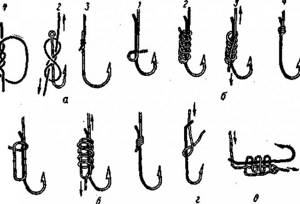
For medium-sized fish, such as ides and carp, you need to choose hooks numbered 6 to 10, and for larger fish, you need hooks numbered 8 to 12.
Good to know. If you want to use something large for bait, for example, a frog, then you need to use hooks starting from number 18 and larger.
